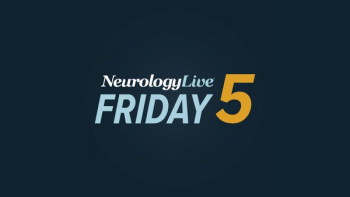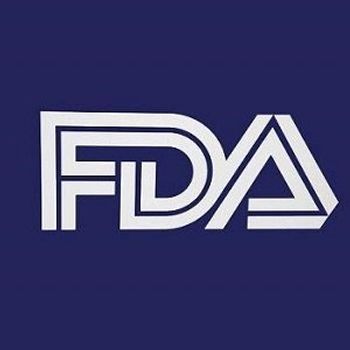
Orexin Receptor Agent ALKS 2680 Meets End Points in Phase 2 VIBRANCE-1 Study
Key Takeaways
- ALKS 2680 showed significant, dose-dependent improvements in sleep latency and wakefulness in NT1 patients, supporting phase 3 trials.
- The trial demonstrated improvements in excessive daytime sleepiness and cataplexy rates, with a favorable safety profile.
New study reveals that alixorexton significantly improves wakefulness and reduces daytime sleepiness in narcolepsy type 1, paving the way for phase 3 trials.
Newly reported data from the phase 2 VIBRANCE-1 study (NCT06358950) showed that ALKS 2680 (Alkermes), an investigational orexin 2 receptor agonist, led to statistically significant and dose-dependent improvements in sleep latency among patients with narcolepsy type 1 (NT1). These findings, including positive effects on key secondary end points and exploratory patient-reported outcome measures, further support the drug’s development into phase 3 trials.1
In the double-blind, placebo-controlled trial, treatment with ALKS 2680, otherwise known as alixorexton, resulted in statistically significant, clinically meaningful, and dose-dependent improvements in the Maintenance of Wakefulness Test (MWT) after 6 weeks of treatment at all doses tested (4 mg, 6 mg, and 8 mg). In addition, the new data revealed statistically significant enhancements in excessive daytime sleepiness via the Epworth Sleepiness Scale (P <.0001 at all doses), a key secondary end point.
In this dose-range-finding trial, 92 patients were randomly assigned to alixorexton at 3 different doses of placebo, once daily for 6 weeks, with an optional 7-week, open-label study to follow once completed. Alkermes, a global biopharmaceutical company, plans to present more detailed safety and efficacy data from the study during an oral presentation at the World Sleep Congress, scheduled September 5-10, 2025, in Singapore.
"These compelling results demonstrated that once-daily alixorexton normalized wakefulness and excessive daytime sleepiness scores in highly symptomatic patients with narcolepsy type 1 with a generally well tolerated profile across all doses tested. In addition, the initial data from patient-reported outcome measures related to fatigue and cognition are truly exciting and highlight the breadth of benefit that alixorexton may provide across multiple facets of narcolepsy," Giuseppe Plazzi, MD, PhD, neurologist and director of the Narcolepsy Center at the IRCCS at the Neurological Sciences of Bologna, said in a statement.
He added, "There is a clear and pressing need for new therapies for narcolepsy type 1, as patients continue to face a range of persistent symptoms that disrupt their day-to-day lives. These exciting data underscore the transformative potential of orexin 2 receptor agonists for the treatment of narcolepsy type 1 and highlight the differentiated features of alixorexton."
Throughout the 6-week study, all doses of alixorexton led to improvements in weekly cataplexy rates, with the 6-mg group demonstrating statistical significance (P = .005). On exploratory patient-reported outcome measures, the investigational agent demonstrated clinically meaningful improvements in the Narcolepsy Severity Scale (NSS; P <.001 at all doses), as well as in the British Columbia Cognitive Complaints Inventory (P <.0001 at all doses), a measure of cognitive complaints.
While the reported P values were nominal in significance, they still demonstrated the potential therapeutic effect of alixorexton in treating NT1. Over the study period, all dosed groups had clinically meaningful improvements in fatigue, evaluated through Patient Reported Outcomes Measurement Information System-Fatigue, compared with placebo (P <.01 at all doses).
In terms of safety, the investigational agent continued to show a consistent profile, with no serious treatment-emergent adverse events and no treatment-related safety signals in hepatic and renal parameters, vital signs, or ophthalmic exams. Encouragingly, more than 95% of patients who completed the double-blind portion entered the open-label extension, which remains ongoing.
READ MORE:
"Based on the positive outcomes across multiple symptoms important to patients, we are moving forward expeditiously to initiate a global phase 3 program. We look forward to sharing detailed data from Vibrance-1 at the World Sleep meeting in September,” Craig Hopkinson, MD, chief medical officer and executive vice president of research and development at Alkermes, said in a statement.1 "These positive topline data represent an important stride forward for the alixorexton development program and Alkermes' broader portfolio of orexin 2 receptor agonists."
Alixorexton is currently being assessed in 2 phase 3 studies dubbed VIBRANCE-2 (NCT06555783) and VIBRANCE-3 (NCT06843590), which include patients with narcolepsy type 2 (NT2) and idiopathic hypersomnia (IH), respectively. VIBRANCE-2,
VIBRANCE-2 is expected to include 80 participants with NT2, defined as narcolepsy without cataplexy, who will receive once-daily treatment. The study, which includes an open-label extension, comprises patients aged 18 to 70 years with a body mass index between 18 and 35 kg/m2 who have met the diagnostic criteria for NT2 according to the International Classification of Sleep Disorders - Third Edition, Text Revision guidelines.
Alixorexton was shown to improve wakefulness for NT2 and IH in a previously completed, small-scale,
REFERENCES
1. Alkermes announces positive topline results from Vibrance-1 phase 2 study of once-daily Alixorexton in patients with narcolepsy type 1. News release. Alkermes. July 21, 2025. https://www.prnewswire.com/news-releases/alkermes-announces-positive-topline-results-from-vibrance-1-phase-2-study-of-once-daily-alixorexton-in-patients-with-narcolepsy-type-1-302509211.html
2. Alkermes announces initiation of Vibrance-2 phase 2 study evaluating ALKS 2680 for the treatment of narcolepsy type 2. News release. Alkermes. August 22, 2024. Accessed July 21, 2025. https://www.prnewswire.com/news-releases/alkermes-announces-initiation-of-vibrance-2-phase-2-study-evaluating-alks-2680-for-the-treatment-of-narcolepsy-type-2-302227858.html
3. Alkermes announces positive topline results from phase 1b study of ALKS 2680 demonstrating improved wakefulness in patients with narcolepsy type 2 and idiopathic hypersomnia. News release. Alkermes. April 9, 2024. Accessed July 21, 2025. https://www.prnewswire.com/news-releases/alkermes-announces-positive-topline-results-from-phase-1b-study-of-alks-2680-demonstrating-improved-wakefulness-in-patients-with-narcolepsy-type-2-and-idiopathic-hypersomnia-302111041.html
Newsletter
Keep your finger on the pulse of neurology—subscribe to NeurologyLive for expert interviews, new data, and breakthrough treatment updates.































